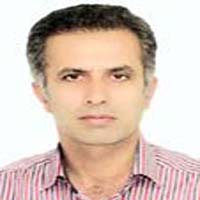Use of dairy effluent in the cultivation of Spirulina platensis
One of the main requirements in wastewater treatment is the need to remove nutrients, especially nitrogen and phosphorus, which can lead to eutrophication of these sources if they are discharged to water sources. In this study, the application of dairy effluent in the cultivation of Spirulina platensis was studied with the aim of treatment and removing nutrients and also the amount of biomass produced. Thus, two concentrations of Spirulina platensis (0.05 and 0.1 g/l) were cultured in three dilutions (25, 50, 75%) of dairy effluent. The results showed that both factors of different concentrations of microalgae and different dilution of effluent had an important role in nutrient absorption and biomass production. The highest percentages of nitrate, phosphate, ammonia removal (98.03, 74.14, 97.44%) as well as maximum biomass (920 ± 0.09 g/l) were related to 25% dilution of the effluent and secondary microalgae concentration. In fact, the secondary concentration of microalgae (0.1 g/l) performed better than the primary concentration (0.05 g/l) and succeeded in removing higher amounts of nutrients. Thus, dairy effluent is a suitable culture medium for the growth of Spirulina platensis and by reducing the dilution percentage from 75% to 25% and increasing the amount of available nutrients, the amount of biomass increases.
-
Utilization of Fourier Transform and Landscape Metrics for Landscape Health Assessment
Niloufar Islamzadeh *, Alireza Mikaieli Tabrizi, Abdolrassoul Salmanmahiny, Rasul Ghorbani
Environmental Researches, -
Effect of dietary lecithin on antioxidant defense of rainbow trout, Oncorhynchus mykiss broodstock and offspring
Fatemeh Jafari, Naser Agh, *, Abdoljabbar Irani, Reyhaneh Ravanbakhsh, Mahdi Imani
Journal of Aquatic Animals Nutrition, -
Investigating the effluent quality of Vannamei shrimp farms, Litopenaeus vannamei (Boone 1931) Entered Gamishan International Wetland
Fatemeh Ghodrati *, , Naser Agh, Seyed Aliakbar Hedayati, Rahmatollah Naddafi, Ali Jalali, Fakhriye Shiroodmirzai
Journal of Utilization and Cultivation of Aquatics, -
Survey of growth performance, antioxidant enzyme activity and bacterial community in recirculating, biofloc-recirculating, and biofloc common carp culture systems
Abdoljabbar Irani*,
Journal of Aquaculture Development,



